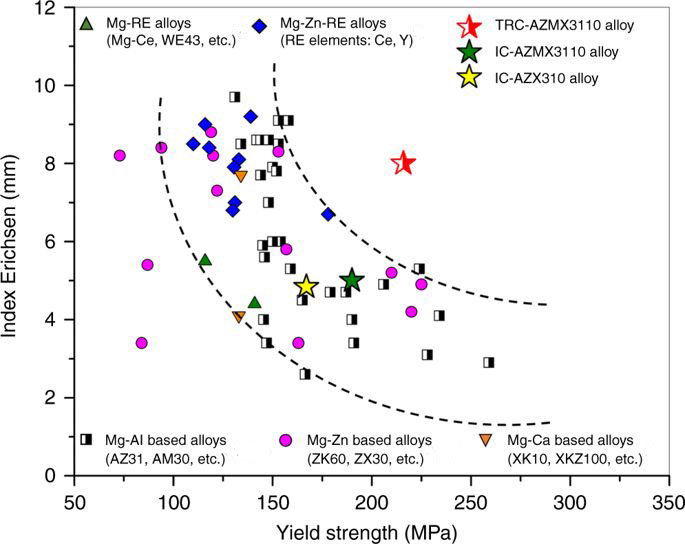Researchers from Pohang University of Science and Technology, Republic of Korea, reported in the journal Nature Communications an alloy design concept that could broaden the use of magnesium (Mg) alloys in engineering applications requiring lightweight materials. Magnesium alloys are the lightest structural alloys. Their use in automotive and aerospace applications for weight reduction could provide improved fuel economy, for example. A commonly used Mg alloy is AZ31, which has low density and good mechanical properties. However, AZ31 parts either must be cast or machined, because reshaping the alloy without adding or removing material—known as forming—requires high-temperature (260°C) processing. In contrast, steel and aluminum (Al) forming is possible at room temperature. See also: Airplane; Alloy; Aluminum alloys; Automobile; Density; Machinability of metals; Magnesium; Magnesium alloys; Mechanical properties of metal; Metal forming; Steel

| Alloy | Element—% | ||||
|---|---|---|---|---|---|
| AZ31 | Al—3.0 | Zn—1.0 | Mn—0.25 | Ca—0.04 | Mg—Balance |
| AZMX3110 | Al—3.0 | Zn—1.0 | Mn—1.0 | Ca—0.5 | Mg—Balance |
Earlier attempts to produce Mg alloys with improved formability resulted in reduced alloy strength. The researchers found that an alloy with the composition of AZMX3110, in combination with a processing technique known as twin roller casting, produced an optimal Mg alloy called TRC-AZMX3110, which has high strength and high formability at room temperature. AZMX3110 that was processed by a more traditional method—called ingot casting—to produce the IC-AZMX3110 alloy did not show improved formability. The significance of this development, according to the researchers, is that because the TRC-AZMX3110 is similar to the commonly used AZ31 Mg alloy, it should easily gain industry acceptance. See also: Metal casting





